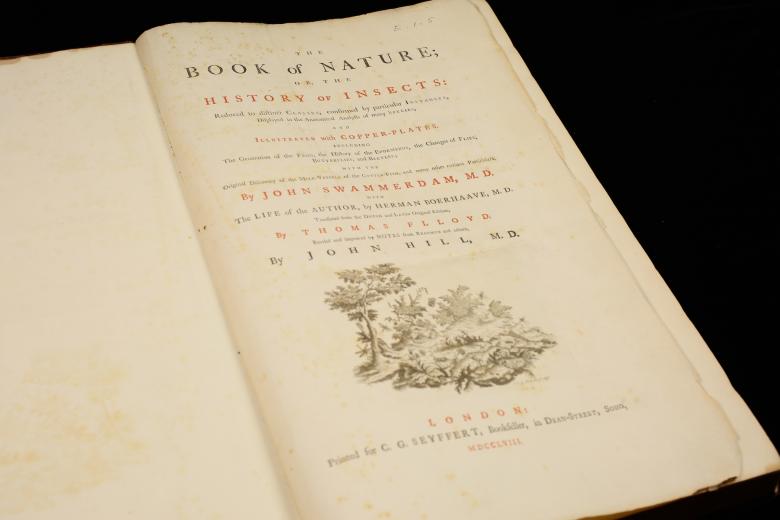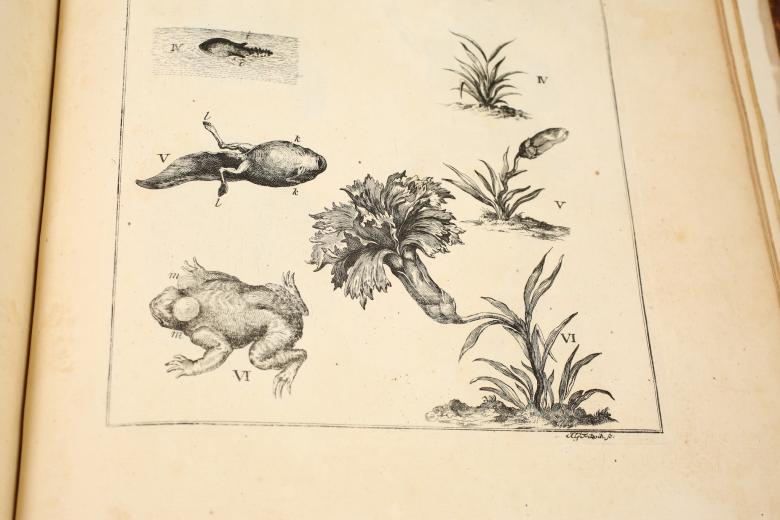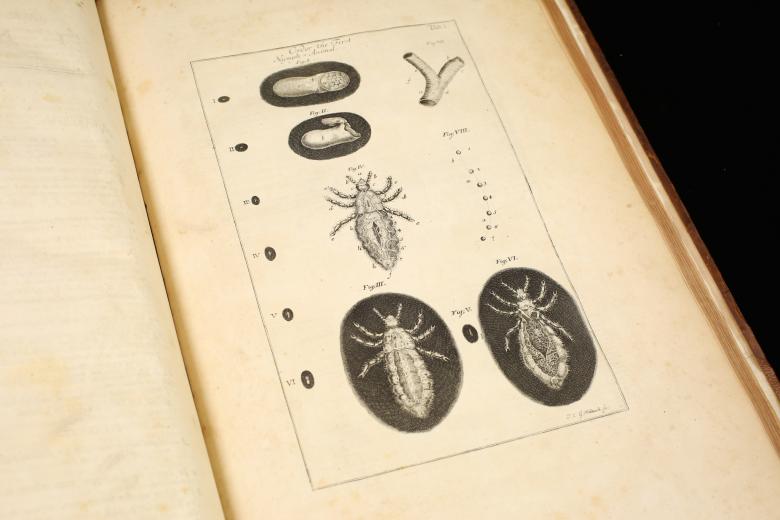Citation
Item Location
This edition features 53 large copperplate engravings appended at the end of the text. The depiction of a mayfly, shown here, reveals unexpected details of the internal organs. A high degree of internal structure was made visible by Swammerdam’s development of the oil immersion technique as well as by the tools he crafted for precise dissection of specimens while they were being viewed under the microscope.
Swammerdam investigated metamorphosis, demonstrating that the egg, larva, pupa and adult forms of various insects belong to the same individual over a single life cycle. The growth of incipient structures, which take on a more visible form later in a life cycle, led him to favor epigenesis, or development, in contrast to the spontaneous generation or the preformationist theories of Leeuwenhoek.
In a prolonged study of bees, Swammerdam made the surprising discovery that a colony’s ruling bee possessed ovaries. Moreover, he concluded that the queen bee is the sole mother of the colony.
Swammerdam’s explorations of the intricate beauty of microscopic structures led him to insert, throughout his works, devotional paragraphs in praise of the Creator. Later naturalists, from Adams to Gosse, frequently cited Swammerdam in their efforts to convey the moral benefits of scientific investigation. Later in life, when Niels Steno extended Swammerdam an invitation to come to the Medici court in Tuscany, Swammerdam declined, preferring to pursue spiritual matters under the direction of the Flemish mystic, Antoinette Bourignon, at the expense of continuing his scientific research.
The OU History of Science Collections holds 8 early editions of Swammerdam’s works.
Related Items
Resource Type: Book









